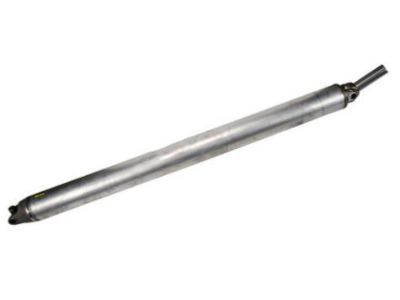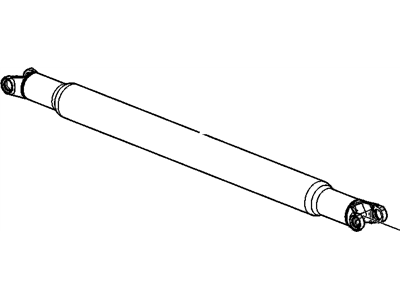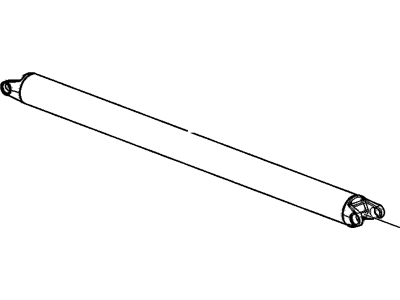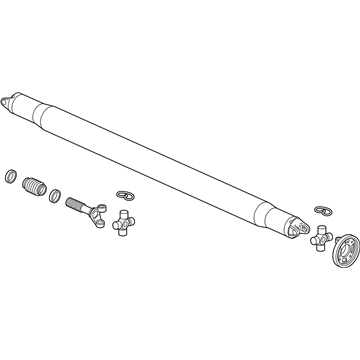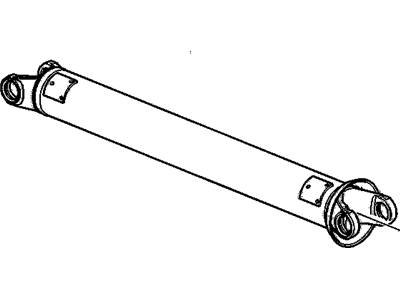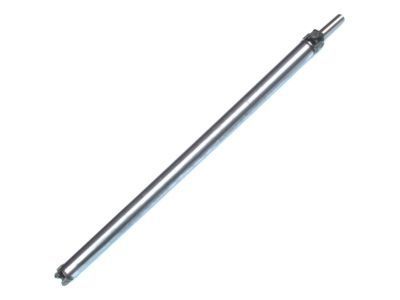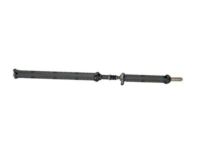My Garage
My Account
Cart
Genuine GMC Sierra Drive Shaft
Axle Shaft- Select Vehicle by Model
- Select Vehicle by VIN
Select Vehicle by Model
orMake
Model
Year
Select Vehicle by VIN
For the most accurate results, select vehicle by your VIN (Vehicle Identification Number).
360 Drive Shafts found
GMC Sierra Propeller Shaft Assembly
Part Number: 15112325$805.43 MSRP: $1364.97You Save: $559.54 (41%)GMC Sierra Shaft Assembly, Propeller
Part Number: 25857868$565.33 MSRP: $801.20You Save: $235.87 (30%)GMC Sierra Propeller Shaft Assembly
Part Number: 23251126$805.10 MSRP: $2207.57You Save: $1402.47 (64%)Ships in 1-3 Business DaysGMC Sierra Propeller Shaft Assembly
Part Number: 10382035$544.07 MSRP: $946.93You Save: $402.86 (43%)GMC Sierra Front & Rear Propeller Shaft Assembly
Part Number: 23508419$976.49 MSRP: $2169.71You Save: $1193.22 (55%)Ships in 1-3 Business DaysGMC Sierra Propeller Shaft Assembly
Part Number: 23418973$451.47 MSRP: $766.60You Save: $315.13 (42%)Ships in 1-2 Business DaysGMC Sierra Shaft Assembly, Prop
Part Number: 84907490$488.55 MSRP: $775.49You Save: $286.94 (37%)Ships in 1-3 Business DaysGMC Sierra Propeller Shaft Assembly
Part Number: 20912702$1342.30 MSRP: $1902.35You Save: $560.05 (30%)Ships in 1-2 Business DaysGMC Sierra Shaft Assembly, Prop
Part Number: 84669660$376.48 MSRP: $655.25You Save: $278.77 (43%)Ships in 1-3 Business DaysGMC Sierra Propeller Shaft Assembly
Part Number: 23418972$647.90 MSRP: $1495.16You Save: $847.26 (57%)GMC Sierra Shaft Assembly, Propeller
Part Number: 23251123$295.23 MSRP: $724.77You Save: $429.54 (60%)GMC Sierra Shaft Assembly, Propeller
Part Number: 84229485$878.91 MSRP: $1937.23You Save: $1058.32 (55%)Ships in 1-2 Business DaysGMC Sierra Propeller Shaft Assembly
Part Number: 84202536$432.42 MSRP: $752.61You Save: $320.19 (43%)Ships in 1-2 Business DaysGMC Sierra Propeller Shaft Assembly
Part Number: 84041624$599.67 MSRP: $956.39You Save: $356.72 (38%)GMC Sierra SHAFT ASM-PROP
Part Number: 84997516$467.89 MSRP: $814.35You Save: $346.46 (43%)Ships in 1-3 Business DaysGMC Sierra Shaft Assembly, Front & Rear Propeller
Part Number: 22984482$231.00 MSRP: $532.91You Save: $301.91 (57%)Ships in 1-2 Business DaysGMC Sierra Front Axle Propeller Shaft Assembly
Part Number: 22760959$327.44 MSRP: $579.32You Save: $251.88 (44%)Ships in 1-2 Business DaysGMC Sierra Propeller Shaft Assembly
Part Number: 15751438$693.14 MSRP: $896.13You Save: $202.99 (23%)
| Page 1 of 18 |Next >
1-20 of 360 Results
GMC Sierra Drive Shaft
Each OEM GMC Sierra Drive Shaft we offer is competitively priced and comes with the assurance of the manufacturer's warranty for the part. Furthermore, we guarantee the speedy delivery of your orders right to your doorstep. Our hassle-free return policy is also in place for your peace of mind.
GMC Sierra Drive Shaft Parts Questions & Experts Answers
- Q: How to remove and install the driveshaft on GMC Sierra?A: Raising the vehicle and supporting it on jackstands, with the front wheels blocked, would remove the rear driveshaft. In order to reinstall in the same position reference marks should be made on the driveshaft and pinion flange and ensure that the transmission is in Neutral with the parking brake off. The drive shaft should be lowered by removing its back u-joint bolts and retainers then slid out of transfer case or transmission. When installing, slide front end into transmission or transfer case then raise rear into position with marks aligned. Afterward, all bolts must be tightened to their proper torque specifications and clamps used to secure bearing caps. For 4WD models' front drive shaft, raise vehicle using jack stands after removal of differential carrier splash shield if any. The boot at the transfer case output shaft should be disengaged and relationship between driveshaft and companion flange marked for future reference. Thereafter disconnect bolts as well as clamps from differential flange while pushing driveshaft toward rear so that it can be separated from this flange before lowering it down to pull out of transfer case. To install, insert a sliding shaft that has splines at its rear through transfer case's output ends while aligning marks attached to them with those found on companion flange's front end. Install clamps together with bolts tightly according to specified torque values whereas push up boot over groove of transfer case output shaft where new clip will have been crimped into place subsequently using clamp-crimping pliers for reinforcement purposes. Lastly, splash shield of front differential carrier should be installed back there again.
- Q: What is a driveshaft and Universal Joint and how do you inspect it on GMC Sierra?A: A driveshaft is a tube or pair of tubes that transmits power between the transmission and Differential, with universal joints located at either end and in the center of two-piece driveshafts. Single piece driveshafts have a splined yoke at the front that allows for movement during vehicle operation, while two-piece driveshafts have a slip joint on the front of the rear section and a center support bearing. The driveshaft assembly requires little service, with universal joints lubricated for life and replaced if problems arise. Inspection involves checking for dents, cracks, and oil leakage, as well as ensuring proper operation of universal joints and center bearings. Driveshaft mounting bolts should also be checked for tightness, and similar checks should be performed on the front driveshaft and driveaxles of 4WD models. Noise or vibration while driving may indicate problems with the driveshaft or other components.
Related GMC Sierra Parts
Browse by Year
2024 Drive Shaft 2023 Drive Shaft 2022 Drive Shaft 2021 Drive Shaft 2020 Drive Shaft 2019 Drive Shaft 2018 Drive Shaft 2017 Drive Shaft 2016 Drive Shaft 2015 Drive Shaft 2014 Drive Shaft 2013 Drive Shaft 2012 Drive Shaft 2011 Drive Shaft 2010 Drive Shaft 2009 Drive Shaft 2008 Drive Shaft 2007 Drive Shaft 2006 Drive Shaft 2005 Drive Shaft 2004 Drive Shaft 2003 Drive Shaft 2002 Drive Shaft 2001 Drive Shaft 2000 Drive Shaft 1999 Drive Shaft




